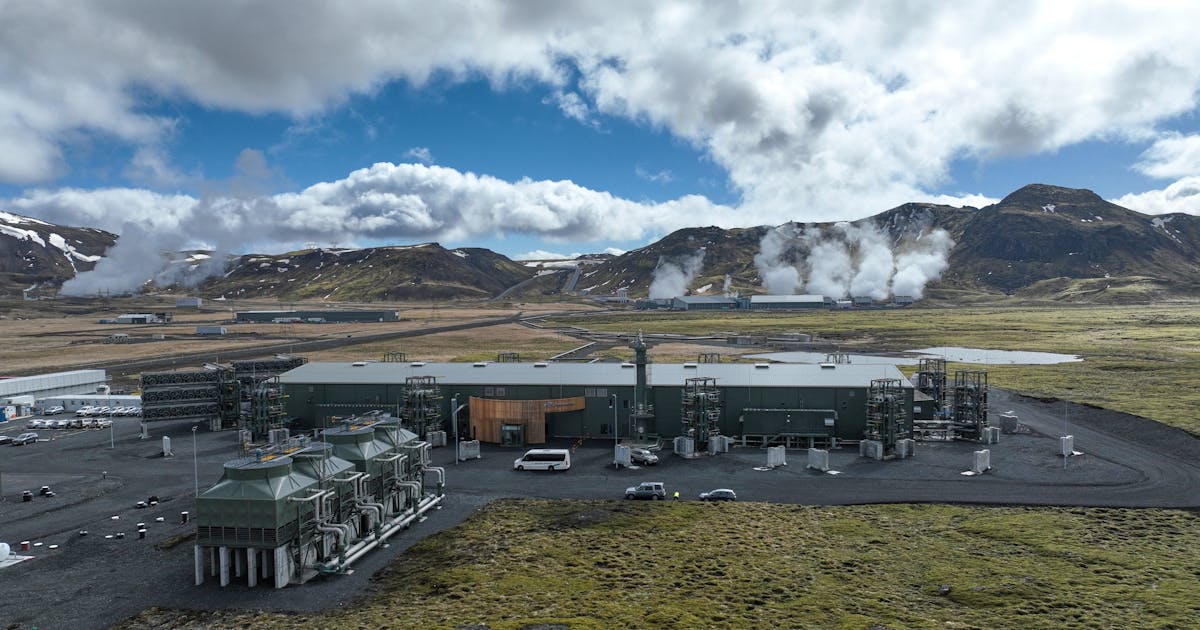Is Carbon Capture Cause for Hope?
Is Carbon Capture Cause for Hope? The New Republic


The World’s Largest Carbon Capture Facility Unveiled in Iceland

Introduction
This report highlights the unveiling of Mammoth, the world’s largest-ever facility for direct air capture of carbon dioxide. Located in southern Iceland, Mammoth has the capacity to capture 36,000 metric tons of carbon annually, making it a significant milestone in the field of carbon capture technology. However, the article also discusses the challenges and costs associated with carbon capture and emphasizes the need for more widespread adoption of this technology to achieve the Sustainable Development Goals (SDGs).
Mammoth’s Impact on Carbon Capture
Despite its large capacity, Mammoth’s contribution to global carbon capture remains relatively small, considering the current global capture rate of less than 0.01 million tonnes. The International Energy Agency estimates that 70 million tonnes of carbon need to be captured annually to limit global temperature rise to 1.5 degrees Celsius by the end of the century. Mammoth’s opening is seen as a critical step towards achieving this goal.
The Cost and Optimism Surrounding Carbon Capture
While Mammoth’s opening is hailed as a breakthrough, companies like ExxonMobil express concerns about the high costs of carbon capture, ranging from $600 to $1000 per ton. The CEO of Climeworks, the company behind Mammoth, hopes to reduce the cost to $300 per ton by 2030. Despite the challenges, there is a growing chorus of climate advocates urging people to embrace hope and optimism in the face of climate change.
The Need for Hope and Action
Amidst the alarming increase in carbon dioxide concentration and predictions of rising temperatures, climate experts emphasize the importance of hope and love in driving effective climate action. They highlight the role of technological solutions and positive developments in renewable energy sources as reasons for hope. However, the relationship between hope and action is complex, and the article raises questions about the effectiveness of hope alone in addressing climate change.
The Role of Carbon Capture Technologies
The article acknowledges the importance of carbon capture technologies in decarbonizing industrial processes and reducing emissions. However, it also raises concerns about the profitability and scalability of these technologies. It highlights the need to differentiate between companies that genuinely focus on carbon removal and those that use carbon capture as a means to continue fossil fuel operations.
Conclusion
The report concludes by emphasizing that individuals have the capacity to hold complex thoughts and emotions about climate change. It suggests that being “hope-free” does not mean being hopeless but rather acknowledging the challenges and planning actions accordingly. Achieving the SDGs requires a combination of hope, technological advancements, and widespread adoption of carbon capture technologies.
SDGs, Targets, and Indicators Analysis
1. Which SDGs are addressed or connected to the issues highlighted in the article?
- SDG 13: Climate Action
- SDG 7: Affordable and Clean Energy
The article discusses the issue of carbon capture and its connection to climate change and the need for clean energy.
2. What specific targets under those SDGs can be identified based on the article’s content?
- SDG 13.2: Integrate climate change measures into national policies, strategies, and planning.
- SDG 7.2: Increase substantially the share of renewable energy in the global energy mix.
The article highlights the need to integrate carbon capture technologies into national policies and strategies to address climate change. It also mentions the use of geothermal energy in the carbon capture process, which contributes to increasing the share of renewable energy.
3. Are there any indicators mentioned or implied in the article that can be used to measure progress towards the identified targets?
- Carbon capture capacity (metric tons of carbon captured per year)
- Cost per ton of carbon captured
- Percentage of captured carbon used in enhanced oil recovery
The article mentions the capacity of the Mammoth facility to capture 36,000 metric tons of carbon per year. It also discusses the cost per ton of carbon captured by Climeworks and the use of captured carbon in enhanced oil recovery.
Table: SDGs, Targets, and Indicators
| SDGs | Targets | Indicators |
|---|---|---|
| SDG 13: Climate Action | 13.2: Integrate climate change measures into national policies, strategies, and planning. | – |
| SDG 7: Affordable and Clean Energy | 7.2: Increase substantially the share of renewable energy in the global energy mix. | – |
| – | – |
Copyright: Dive into this article, curated with care by SDG Investors Inc. Our advanced AI technology searches through vast amounts of data to spotlight how we are all moving forward with the Sustainable Development Goals. While we own the rights to this content, we invite you to share it to help spread knowledge and spark action on the SDGs.
Fuente: newrepublic.com

Join us, as fellow seekers of change, on a transformative journey at https://sdgtalks.ai/welcome, where you can become a member and actively contribute to shaping a brighter future.







